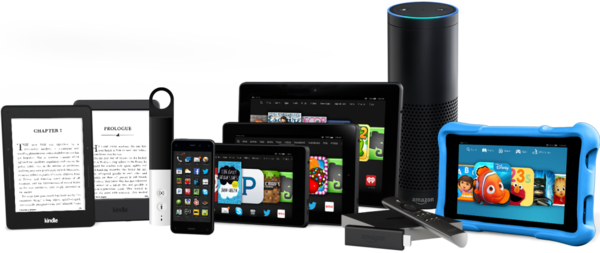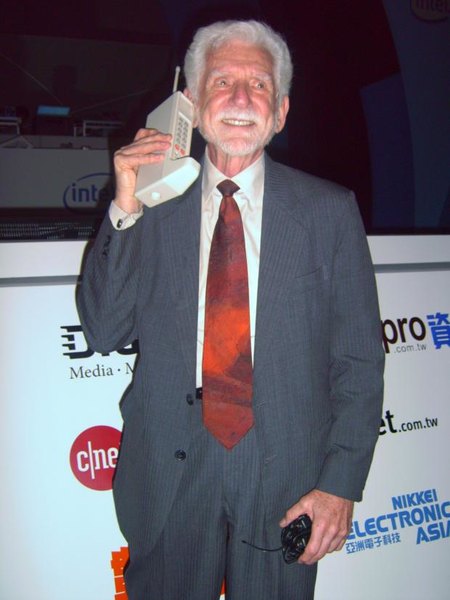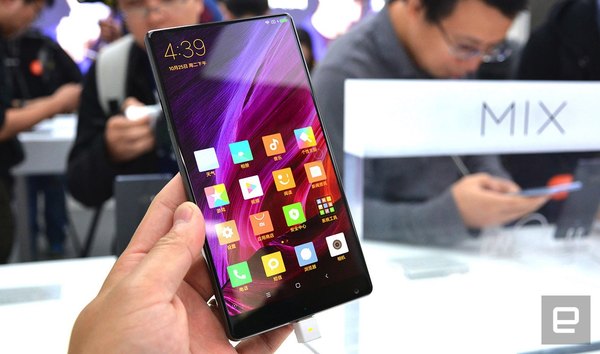From the “they clearly didn’t think this one through” department,1 comes news of the federal government’s new ban on “electronic devices larger than a cellphone” from eight Muslim-majority countries, ostensibly to defend against in-air terror attacks that could somehow come via a device that’s been x-rayed and powered on to ensure it works. But what’s a cell phone and how big is too big?
This is the first cell phone ever produced:
That, ladies and gentlemen, is Martin Cooper of Motorola on April 3, 1973, calling a competitor to let them know that he was calling from a “mobile” phone.2 That cellphone? It’s 1.1 kg, and measures 228.6 x 127 x 44.4mm.
Not convinced? Here’s another, this one from 2017:3
This 6.7-inch screen behemoth is Xiomi’s gorgeous Mi Mix, weighing in at 209 grams and 158.8 x 81.9 x 7.9 mm. And that’s not even properly encroaching on the tablet-as-a-phone territory.
How do some of today’s popular handheld devices compare and what can you get away with since (until we’ve seen the actual text of this bill, and even then, only presuming the president executive branch was smart enough to include hard numbers) the only requirement is that electronics have to be “smaller than a cell phone?” Is your favorite in-flight handheld entertainment too big to bring with?
| Weight | Largest Side | Area | Volume | |
| Kindle Oasis | 0.107 kg | 14.2 cm | 173 cm² | 139 cm³ |
| Kindle (8th gen) | 0.161 kg | 16.0 cm | 182 cm² | 146 cm³ |
| Pixel XL | 0.168 kg | 15.5 cm | 117 cm² | 100 cm³ |
| LG V20 | 0.174 kg | 16.0 cm | 125 cm² | 95 cm³ |
| iPhone 7 Plus | 0.188 kg | 15.8 cm | 123 cm² | 90 cm³ |
| A stick of dynamite | 0.190 kg | 20.0 cm | 217 cm² | 161 cm³ |
| Xiaomi Mi Mix | 0.209 kg | 15.9 cm | 130 cm² | 103 cm³ |
| Nintendo 3DS | 0.235 kg | 13.4 cm | 99 cm² | 208 cm³ |
| iPad Mini 4 | 0.299 kg | 20.3 cm | 274 cm² | 167 cm³ |
| Nintendo 3DS XL | 0.336 kg | 15.6 cm | 145 cm² | 319 cm³ |
| Asus Transformer | 0.544 kg | 26.4 cm | 448 cm² | 448 cm³ |
| 12″ MacBook | 0.92 kg | 28.1 cm | 551 cm² | 722 cm³ |
| 11″ MacBook Air | 1.08 kg | 30 cm | 576 cm² | 920 cm³ |
| First-ever cellphone | 1.1 kg | 22.9 cm | 290 cm² | 1,289 cm³ |
| Chromebook 3 | 1.1 kg | 29.0 cm | 596 cm² | 1,060 cm³ |
| MacBook Air | 1.35 kg | 32.5 cm | 738 cm² | 1,254 cm³ |
If we charitably disregard the original Motorola “mobile” phone from the category of allowed devices, that still leaves a lot of room for interpretation. What metric is being used to determine “size?” Is it the weight? The longest dimension? The surface area of the biggest side? The volume? Who knows?
Unfortunately, going by almost any of these metrics, most popular consumer electronics that travelers might carry with them aboard airlines would be disqualified. The only possible exception would be the Amazon Kindle, which could be permitted depending on which metric is being used. What wouldn’t be blocked by these regulations, you ask? A stick of dynamite.
The poor fellas in this department have been so overworked these past 60 days. They’ve really never put in this much overtime since, well, ever. ↩
Image and phone details retrieved from http://www.knowyourmobile.com/nokia/nokia-3310/19848/history-mobile-phones-1973-2008-handsets-made-it-all-happen ↩
Image courtesy of engadget ↩



